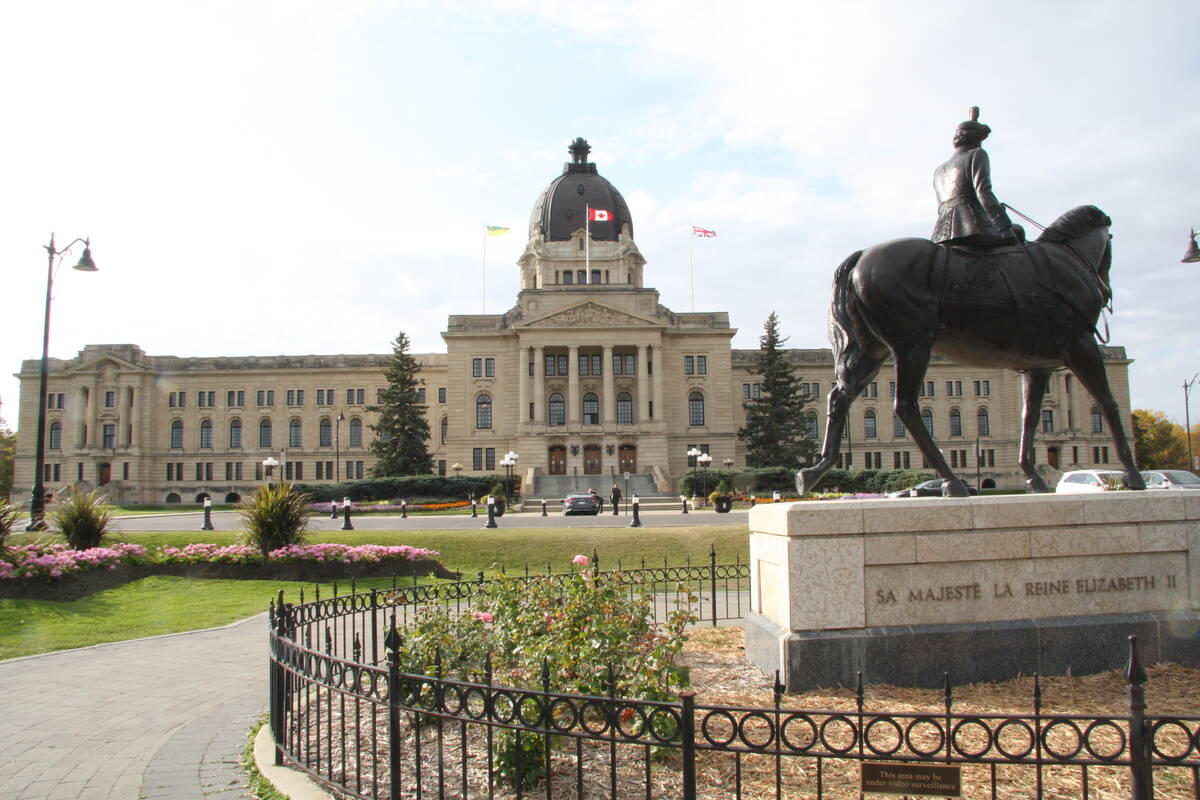Off-stream storage advantages:
A $250,000 study is underway to assess potential water storage sites on and near the Oldman, Bow and Red Deer rivers.
It will build upon an earlier engineering study that identified 35 sites on the Bow, 39 sites on the Oldman and 33 sites on the Red Deer that could serve as on-stream or off-stream water storage sites in Alberta.
Roger Hohm, branch head of Alberta Agriculture’s basin water management group, told the April 16-17 water, agriculture and the environment conference that the sites were selected from a “purely engineering” standpoint to see where dams or off-stream storage sites could be located and how much water they could hold.
Read Also

Saskatchewan throne speech promises strong economy
Saskatchewan’s legislative agenda for the coming year will focus on meeting the challenges of new world trading relationships, said the speech from the throne.
Results, which are expected next spring, will be reviewed by a nine-person steering committee comprising representatives from provincial agriculture and environment departments, irrigation districts, industries, municipalities and University of Lethbridge water experts.
The study is being done by AMEC, a consulting and engineering firm. It also completed a study in 2009 that estimated water demands in the South Saskatchewan River basin could increase by 53 percent by 2030 if irrigation districts used their full allocations and if climate change results in higher demand by all users because of anticipated lower stream flows.
In an interview after his presentation, Hohm said new water storage requires time and careful study.
“It takes a long time,” he said.
“We’re not in the same situation as we were with the Oldman Dam, and even (with) the Oldman Dam, the studies were undertaken from the late ’70s to early ’80s and we really didn’t turn any dirt out there until 1984-85.
“So even that was probably a 10-year period. Nowadays it’s probably double that time because we want to make sure we get it right.”
The Oldman Dam, built on the river near Pincher Creek, Alta., was completed in 1992. Hohm said any decision to build additional storage would be based on key factors.
“Will a dam reduce the risk to existing users? Will it support environmental concerns? Will it support First Nations water needs? And will it allow us some of that economic expansion? Those are the real key things we’re looking at.”
In his speech, Hohm said the South Saskatchewan River basin is likely one of the most studied in Canada and is highly regulated. It already includes 20 on-stream reservoirs, 15 to 20 hydro plants, almost two million acres of irrigated land and more than two million people.
Almost 50 percent of Alberta’s economic activity occurs in the basin.
An apportionment agreement also requires that 50 percent of river stream flow pass into Saskatchewan.
He said demands on the watershed are of major concern, particularly in light of climate change that could reduce stream flows.
Recent provincial initiatives have focused on water conservation rather than more capture and storage. Conservation objectives for each large river sub-basin in the province were established in 2007.
- Less impact on aquatic, riparian and fishery environments.
- Less impact on historical resources.
- Less impact on river flow pattern.
- Less impact on fish migration.
- Less costly spillway structures.
- Less capital cost.
- Often creates new recreation opportunities.
- No Alberta precedent for temporary river flow storage diverted back to source.
- Higher evaporation losses per unit of storage.
- May require expensive fish passage plans.
- Pumping systems could be costly.
- Reduced potential for hydropower.
- Costly diversion and conveyance works.
- Water quality can be poor.















